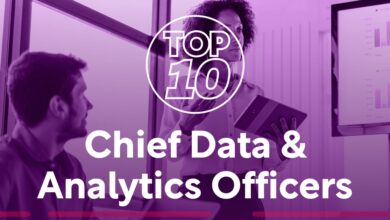Microsoft Fabric aims to improve data analytics for businesses

The data and analytics industry is evolving, influenced by advances such as generative AI, the rise of citizen analysts, and the growing significance of real-time autonomous actions. To alleviate the complexity and costs of integrating new services into data estates, Microsoft has introduced Microsoft Fabric, an AI-powered data analytics platform designed to future-proof and seamlessly enhance businesses’ data strategies.
Notably, Aurizon, Australia’s largest rail freight operator, has utilised Fabric to upgrade its data estate and analytics system, aiming to streamline and simplify its architecture by removing legacy systems and undertaking sophisticated predictive analytics.
Microsoft Fabric promises to improve the way companies manage and analyse their data, providing robust additions and customisable features to meet diverse organisational needs. These enhancements include a redesigned Real-Time Intelligence workload, which combines Synapse Real-Time Analytics and Data Activator to manage and act on high-volume, granular event streaming data. It also introduces new tools like the Fabric Workload Development Kit, API for GraphQL, and user data functions to assist developers in building potent solutions on the platform.
Aurizon reports significant benefits from using Microsoft Fabric, indicating that the platform has facilitated predictive analytics and optimisations that are expected to yield commercial advantages in the near future. A study by Forrester Consulting corroborates this sentiment, revealing that Microsoft Fabric customers have experienced a three-year 379% return on investment (ROI) with a payback period of less than six months.
The Real-Time Intelligence feature offers an end-to-end experience, enabling dynamic data transformation, real-time queries, and immediate action without needing to pre-load data. The introduction of the Real-Time Hub allows users to manage and explore streaming data from various sources effectively. This feature is currently in preview, enhancing capabilities for handling real-time data seamlessly.
Fabric was developed to be extensible, customisable, and open, allowing for easy creation and integration of custom workloads through the Fabric Workload Development Kit. This kit enables applications built on it to appear as native workloads within Fabric, ensuring a consistent user experience. Moreover, leading industry partners such as SAS, Esri, Informatica, Teradata, and Neo4j are already building on Fabric. Key new features include API for GraphQL and user data functions, which aim to streamline data requests and build more efficient applications using various Fabric data sources.
The Fabric Data Factory workload has introduced Data workflows, leveraging Apache Airflow runtime to author, schedule, and monitor complex data pipelines. This allows organisations to orchestrate their data workflows more efficiently using Python.
Microsoft has also enhanced the OneLake unified data lake, extending capabilities to connect to on-premises and network-restricted data sources. This feature aims to reduce data duplication and sprawl, enabling a more streamlined data management approach across multiple clouds and accounts.
In assisting business users, Microsoft has made strides with the general availability of the model explorer and DAX query view in Microsoft Power BI Desktop, aimed at helping analysts manage, analyse, and share insights more effectively. Additionally, Copilot in Fabric, now generally available, offers conversational language support to create dataflows, build machine learning models, and visualise results across multiple Fabric experiences.
A new AI feature, AI skills, is also in preview and is designed to offer a conversational Q&A experience about data, allowing users to ask questions and receive context-rich answers quickly. This feature respects existing security permissions and can embed organisational language and nuances to ensure relevant responses.



